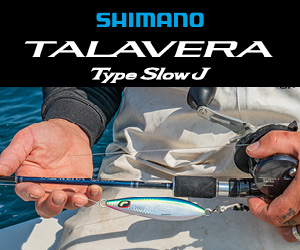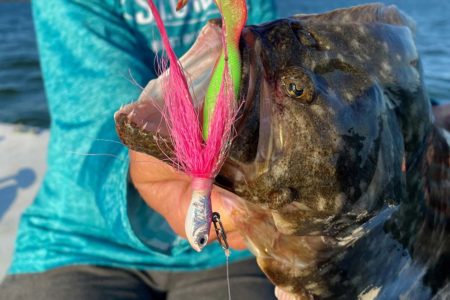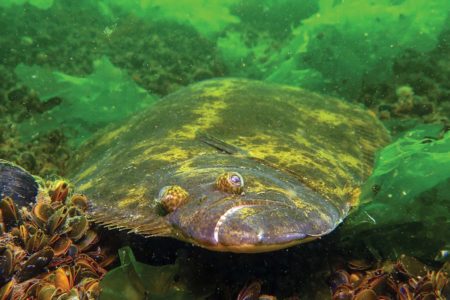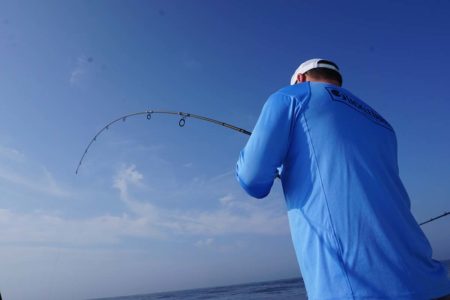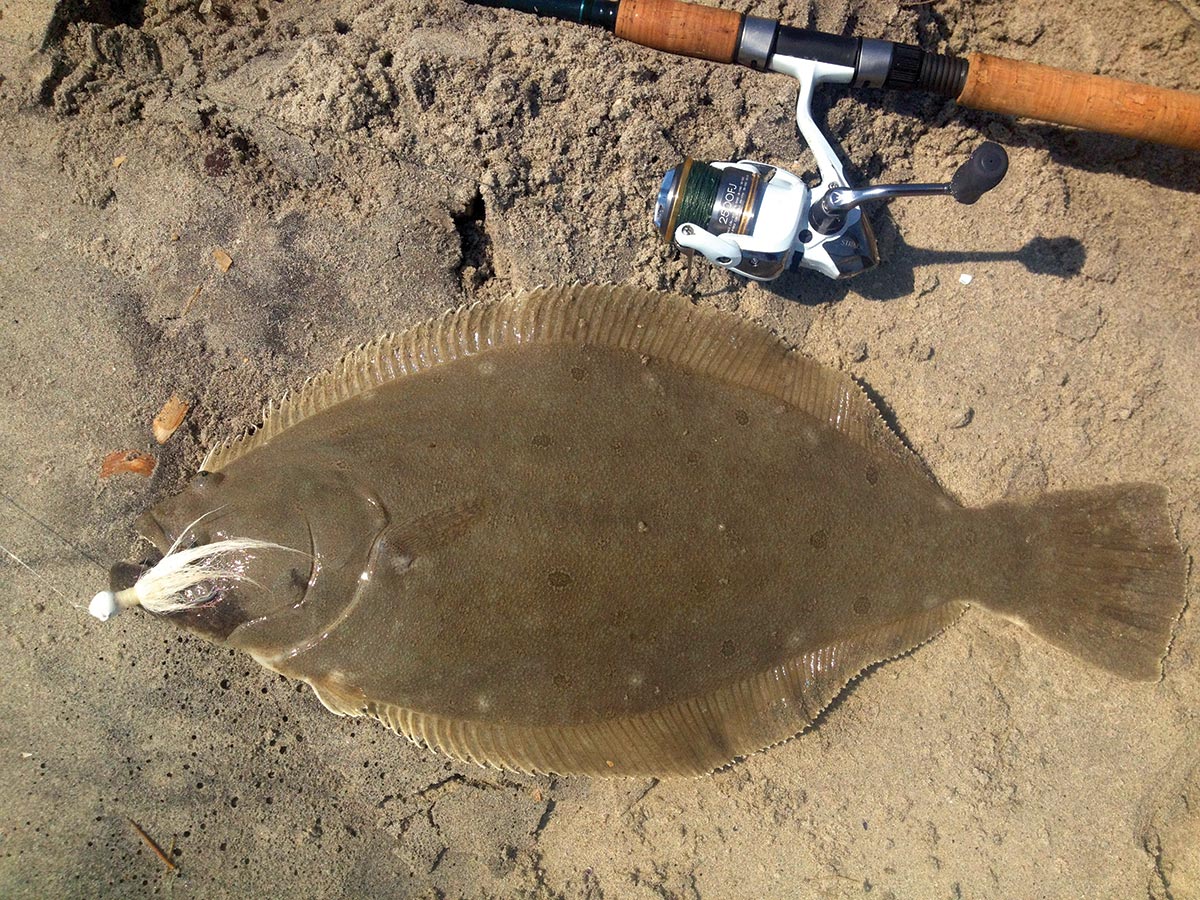
Finding flatties for the shore-bound fisherman.
Nothing gets me more jazzed in the summer than knowing I can walk outside my house, stand in the surf and possibly catch a limit of fluke for dinner in under an hour. No boat needed, no long day on the water. Roughly 15 years or so ago on a clear water day, I remember watching fluke scurrying underneath my shadow as I paddled my surfboard out to the break, which got me to thinking – why not target flatfish from the beach?
A Light Touch
Rods should be manageable and sensitive, with a moderate power and fast action to detect a bite and set the hook with authority, thus I employ either a St. Croix TSMHF70 or a Shimano Terramar Inshore TMSE70M matched with a Shimano Sustain 5000 reel, spooled with 30-pound green Power Pro braid. To the braid is tied a uni-to-uni knot with a 30-inch section of 25-pound Seaguar fluorocarbon leader. Light bucktails or Kalin’s jigheads in the 3/8- to 1/2-ounce range are standard in color combos of white, yellow, pink and chartreuse and will be tied via loop knot onto the leader. Roughly 16 inches up from the bucktail is tied a dropper loop with either a 2/0 bucktail hair teaser or 2/0 Gamakatsu octopus hook. Both the bucktail and the teaser will be tipped with a variety of offerings, first and foremost Berkeley Gulp 3- to 4-inch Swimmin’ Minnows or 2-inch minnows. If you can obtain fresh 3- to 4-inch strip baits of bluefish, mackerel or even squid, before you lance them on the hook, be sure to soak them in a broth of FinEssence oil to really infuse a stink into the baits.
Finding Flatties
The surf can be a dynamic place, especially when targeting fish on the bottom. The usual rules apply—fish high water, look for cuts and sloughs, etc.—but there are other considerations to pay attention to that can be very fluke-specific. For instance, low tide hours can be lights-out fishing in two ways. One, you can work the deeper waters on the inside of the dry sand bar where tides carry forage over the bar and fluke will hunker down feeding in the churned up slough at the start of the incoming tide, and two, you can walk to the outside sand bar and cast way out into the Atlantic, effectively reaching ground you can’t access on higher tides. Though morning and evening hours are always prime times to fish, hours smack dab middle of the afternoon can be even more productive as fluke soak up the heat of the day in the skinny water and get on an aggressive feed. Fluke are also pack fish, meaning if you find one, you’re bound to find a few more in the same area. Many times I’ve pulled a fluke off the edge of a sandbar, then made consecutive casts to pull a dozen more off within a 10-foot span. Make note at what time and tide you do catch fish and the pattern should repeat itself the next day an hour later coinciding with the next day tide shift. As well, any time you can find that clear, even tingy, blue green water and an offshore wind, which is common in the summer, the fluke will be on an aggressive feed.
Slow Approach
As you are not fishing in a vertical manner, but essentially dragging the bucktail horizontally, you want to impart as much action as you can get out of the approach. Cast out and pop-twitch the tip of the rod, hopping the bucktail across the sand floor, picking up the slack with a crank of the reel with a slow and methodical retrieve, maybe two seconds between each pop. Fluke tend to follow the bait, then hit it hard as it drops back. Let him whack at it and set the hook when you feel him inhale it. Sometimes fluke will hit, but literally just sit on the bucktail and you miss the hookset. Let the bucktail just hang there wobbling on the seafloor, twitching the bucktail and not reeling in, nine times out of 10, he will come back and hit the bait. Don’t give up on a retrieve if you miss a strike. Maintain your flow all the way back to your feet as fluke will often follow a bucktail for 30 yards before they hit right in the cut. As well, if you miss a fish close in, reel up and cast to the exact last spot you got the hit. The fluke will often be waiting to hit the bait again.
Surf fluking is more fun than a backyard BBQ. Enjoy the action this summer and bring some fillets back to that BBQ!
